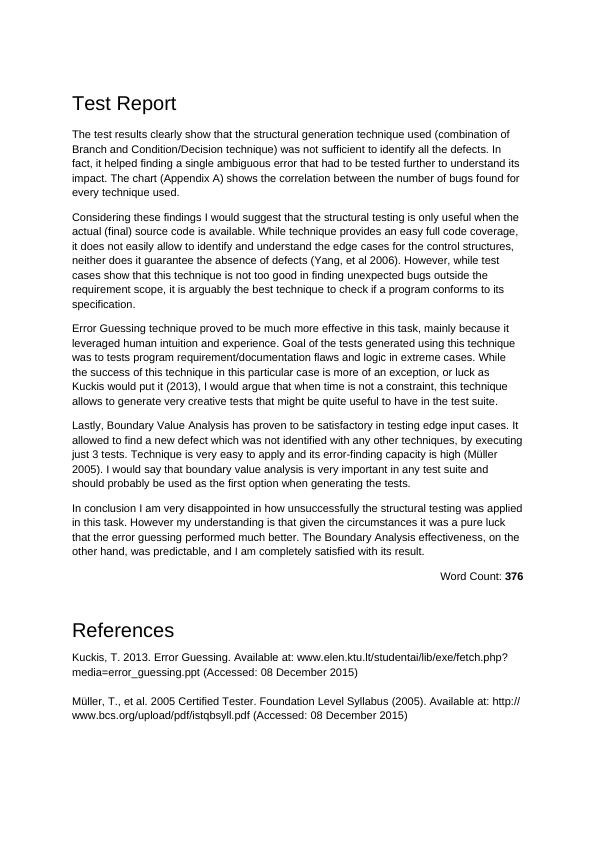Ask a question from expert
Test Report: Structural Testing vs Error Guessing vs Boundary Value Analysis
2 Pages527 Words57 Views
Added on 2019-09-21
About This Document
This test report compares the effectiveness of Structural Testing, Error Guessing, and Boundary Value Analysis techniques in identifying defects in a program. The report suggests that Structural Testing is only useful when the actual source code is available, while Error Guessing and Boundary Value Analysis are more effective in identifying edge cases and input cases respectively.
Test Report: Structural Testing vs Error Guessing vs Boundary Value Analysis
Added on 2019-09-21
BookmarkShareRelated Documents
End of preview
Want to access all the pages? Upload your documents or become a member.
Test Generation Techniques for Desklib Online Library
|2
|888
|366
